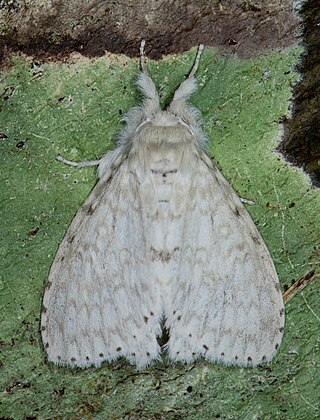
Amyna is a genus of moths of the family Noctuidae erected by Achille Guenée in 1852.
Auchmophanes is a genus of moths of the family Erebidae. The genus was described by Turner in 1908. All three are known from the Australian state of Queensland.

Calophasidia is a genus of moths of the family Noctuidae. The genus was erected by George Hampson in 1908.
Chusaris is a genus of moths of the family Erebidae. It was erected by Francis Walker in 1859.
Corethrobela is a monotypic moth genus in the family Erebidae. Its only species, Corethrobela melanophaes, is known from the Australian state of Queensland. Both the genus and the species were first described by Turner in 1908.

Zalissa is a genus of moths of the family Noctuidae. The genus was erected by Francis Walker in 1865.
Diplothecta is a monotypic moth genus of the family Noctuidae. Its only species, Diplothecta loxomita, occurs in Queensland, Australia. Both the genus and species were first described by Alfred Jefferis Turner, the genus in 1920 and the species 12 years earlier in 1908.
Ecnomia is a monotypic moth genus of the family Noctuidae. Its only species, Ecnomia hesychima, is found in Australia in Western Australia, the Northern Territory and Queensland. Both the genus and species were first described by Turner in 1936.
Elaphristis is a genus of moths of the family Erebidae. The genus was erected by Edward Meyrick in 1891.
Epopsima is a monotypic moth genus of the family Noctuidae described by Turner in 1920. Its only species, Epopsima fasciolata, was first described by Arthur Gardiner Butler in 1886. It is found in Australia in Western Australia, the Northern Territory, Queensland, and New South Wales.
Habrophyes is a monotypic moth genus of the family Noctuidae. Its only species, Habrophyes xuthosoma, is found in Australia where it is found in the Northern Territory and Queensland. Both the genus and species were first described by Alfred Jefferis Turner, the genus in 1920 and the species 11 years earlier in 1909.
Himerois is a genus of moths of the family Noctuidae. The genus was described by Turner in 1902.
Micrapatetis is a genus of moths of the family Noctuidae. The genus was erected by Edward Meyrick in 1897.
Periopta is a genus of moths of the family Noctuidae. The genus was described by Turner in 1920.
Pyripnoa is a genus of moths of the family Noctuidae. The genus was described by Turner in 1920.
Thaumasiodes is a monotypic moth genus of the family Noctuidae. Its only species, Thaumasiodes eurymitra, is found in the Australian state of Queensland. Both the genus and species were first described by Turner in 1939.

Dura is a genus of tussock moths in the family Erebidae. The genus was erected by Frederic Moore in 1879.

Euzora is a genus of moths in the subfamily Lymantriinae. The genus was described by Turner in 1915.
Oligeria is a monotypic moth genus in the subfamily Lymantriinae described by Turner in 1921. Its only species, Oligeria hemicalla, the tiny tussock moth, was first described by Oswald Bertram Lower in 1905. It is found in the Australian states of New South Wales and Victoria.
Lacistophanes is a monotypic moth genus in the family Geometridae. Its only species, Lacistophanes hackeri, is found in the Australian state of Queensland. Both the genus and species were first described by Turner in 1947.



